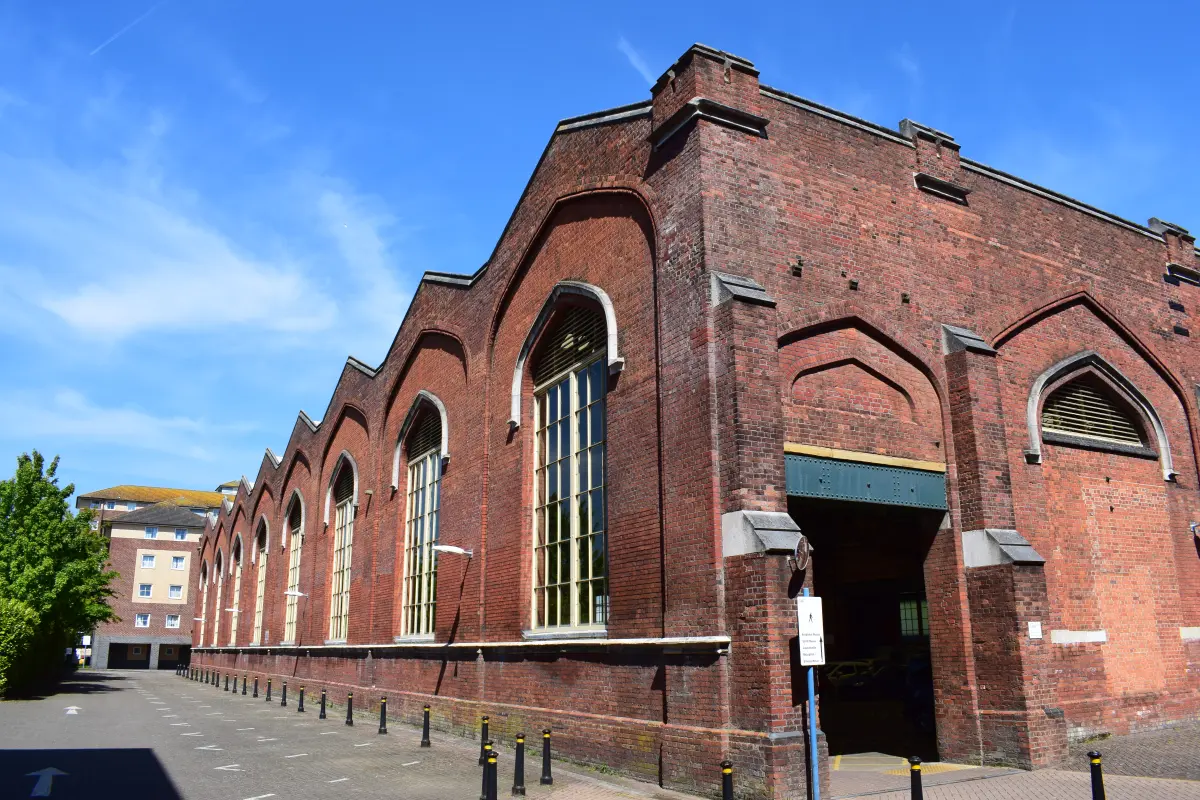At Royal Crescent Road, Southampton, a historic Goods Shed is hiding in plain sight. Once central to the city’s railway life, it now has planning potential, but only through reuse. The Goods Shed on Royal Crescent Road, Southampton is one of those buildings that stands quietly in the background of a city’s story. Built in the late 19th century in Gothic revival style, this large red, brick structure once served a thriving railway and dock complex, now largely disappeared.
The Goods Shed on Royal Crescent Road is historically linked to the railway and freight operations that served Southampton’s docks area, but it is not physically part of the docks themselves. It was built in the late 19th century as part of the railway infrastructure closely connected to the docks’ freight handling, serving as a goods warehouse for cargo transported between the railway and the port. However, it is located slightly inland, near the Terminus Station and surrounded today by student housing, rather than directly on the dockside quays or wharves. There is a Gavin and Stacey anecdote about “Southampton docks” that relates to the cultural recognition of the wider dock area.
In the show’s emotional finale, Smithy races to “Southampton docks” for a dramatic proposal—but eagle-eyed locals quickly spotted that the scene was filmed over 100 miles away in Newport Docks, Wales, not the real Southampton docks. This led to a flurry of playful social media reactions, with Southampton residents joking about being “gaslit” by TV and praising Newport Docks for its “superb acting job” as a stand-in. However, the Goods Shed faced by constraints on development, it is no surprise that questions were raised:
Could it be demolished? Could it be moved? Could it be de, listed?
The answer to all three, based on careful analysis, is: no.
Why demolition doesn’t stack up
The Goods Shed is a Grade II listed building, protected for its distinctive Gothic design and its role in the historic railway infrastructure. Despite some modern alterations, key features, including the trussed roof, riveted beams, and loading doorways, remain intact. It represents the last legible link to Southampton’s historic freight infrastructure, with surviving roof structure and steelwork. It also offers potential for adaptive reuse that preserves industrial memory in a city where much has been lost to redevelopment.
Demolishing it would result in “substantial harm” in planning terms under the National Planning Policy Framework (NPPF). To gain consent, a proposal would need to demonstrate exceptional public benefits. In this case, those simply don’t outweigh the loss.
Even relocation, a rarely approved option, would damage its historic setting and relationship with adjacent listed buildings, notably the nearby Terminus Station and South Western Hotel.
Refurbishment as opportunity
The real opportunity lies in adaptive reuse. The Goods Shed’s generous scale and robust form offer flexibility: event space, business hub, creative studios, or even hospitality. Successful reuse would deliver environmental sustainability and public benefit, key planning gains.
If you’re facing development constraints with a listed structure, don’t underestimate what a thoughtful reuse strategy can achieve.
A heritage statement with clear assessment of significance, architectural value, and options for sensitive upgrade is vital. It’s not about freezing history, but working with it.
#ListedBuildings #HeritagePlanning #AdaptiveReuse #SouthamptonHeritage #GoodsShed #HistoricArchitecture #RailwayHeritage #PlanningAdvice #GothicRevival #SustainableDesign


No Responses